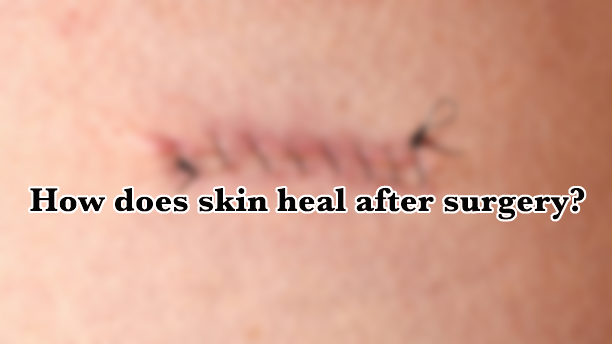
How does skin heal after surgery?
2023-09-13
After surgery, the process of skin healing is both intricate and delicate. When undergoing surgical treatment, doctors employ various methods such as suturing wounds to facilitate skin healing. Here is an overview of the general processes and key factors involved in postoperative skin healing.
In the initial stages following surgery, blood clots may form within the wound. This natural response of the body helps to control bleeding and reduce the risk of infection. Simultaneously, blood vessels surrounding the wound expand, allowing a greater flow of blood, oxygen, and nutrients to the area, providing essential resources for healing.
Over time, the wound undergoes primary healing. During this stage, cells at the wound's edge begin to proliferate and migrate, forming new tissue. These cells produce collagen, a structural protein that enhances the strength and stability of the wound. Additionally, epithelial cells at the wound's edge multiply, gradually covering the original wound surface and forming a protective barrier.
As the healing process progresses, new tissue gradually replaces the original wound. This phase is known as the reconstruction phase. The wound's strength and stability increase steadily during this stage. Blood supply to the area improves, aiding in the repair and regeneration of cells. It's important to note that this phase may result in the formation of scar tissue. The appearance and size of scars can vary depending on individual factors and the surgical techniques employed.
Several factors influence the skin healing process after surgery. A well-rounded and nutritious diet is crucial for cell repair and regeneration. Consuming sufficient amounts of protein, vitamins, and minerals supports healthy skin healing. Additionally, maintaining cleanliness and dryness of the wound is vital. Doctors typically provide specific instructions for wound care to ensure proper cleansing and prevent infection.
Furthermore, individual differences and the type of surgery can affect the healing process and outcome. Some individuals may exhibit faster healing abilities, while others may require more time to recover. The extent and location of trauma during surgery can also impact the healing process. For instance, facial surgery may necessitate a longer healing period and may result in scar formation.
Hemolock Healing Ointment effectively promotes the growing of new cells, continuously supplies nutrients, and significantly shortens the healing cycle. Indicated for general skin wounds (abrasions, cuts, bumps, superficial burns, etc.), surgical wounds, stretch marks, and acne marks.
Made from Carboxymethyl Chitosan which promotes the growth of normal fibroblasts and epithelial cells to accelerate wound healing, the ointment regulates the secretion of cytokines and inhibits the excessive secretion of collagen to suppress scar hyperplasia. When applied to skin, the ointment forms a film to protect the wound surface from external invasion and promote the healing, thus avoids the occurence of the following adverse effects of inadequate wound care: wound exposure infection, hypertrophic scar, and pigmentation.





